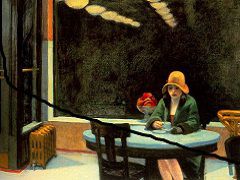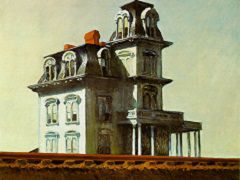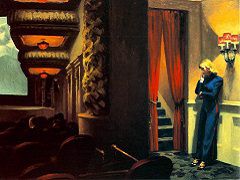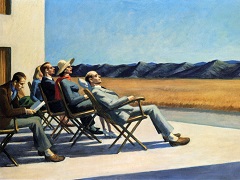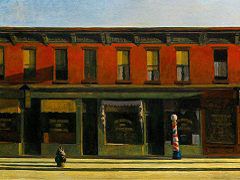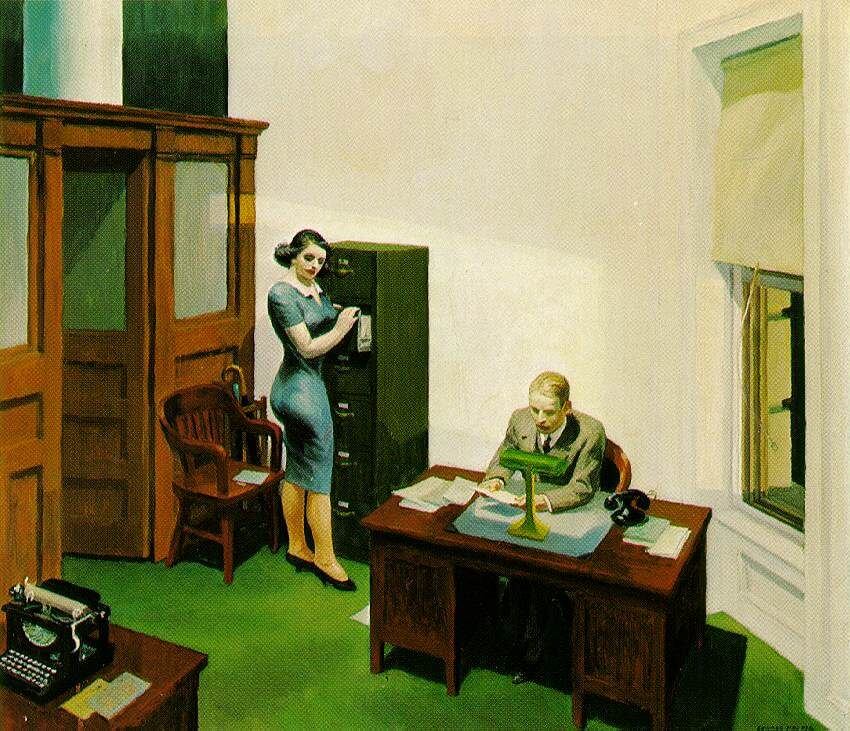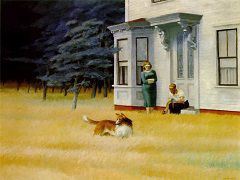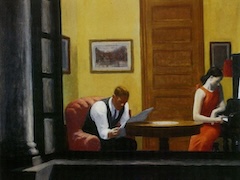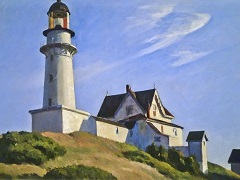Ground Swell, 1939 by Edward Hopper
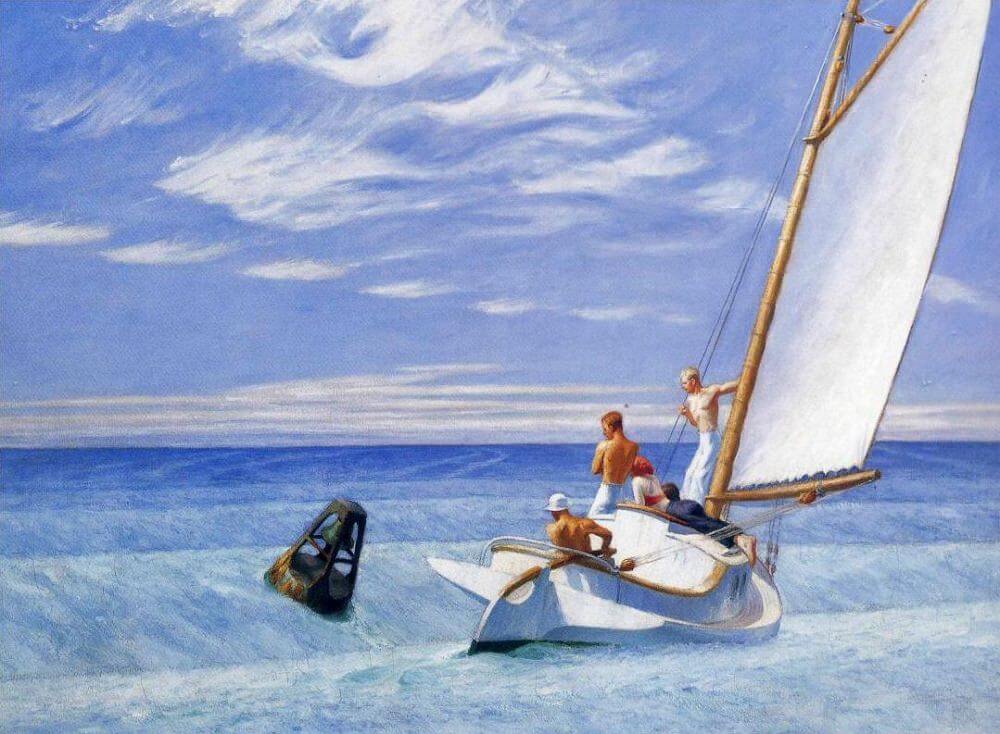
Edward Hopper's lifelong enthusiasm for the sea developed when he was a boy in Nyack, New York, then a prosperous Hudson River port with an active shipyard. Years later, in 1934, he and his wife built a house and studio in South
Truro, Massachusetts, where he produced a number of oil paintings and watercolors manifesting his avid interest in nautical subjects. In this quiet and voyeuristic view, the several figures aboard the boat are disengaged from
each other. Their gazes seem fixed on the bell buoy, and their resulting trancelike state is reinforced by the rolling waves beneath them.
A ground swell is often caused by a far-off storm felt even under clear skies - causing a buoy to ring even when there's no danger. The idea of threat in an idyllic setting has crucial precedents. In a work painted around 1639 by
French classicist Nicolas Poussin, shepherds come across a tomb whose inscription -- "I too once lived in Arcadia" -- brings death into their idyll. Hopper's woman and his three half-naked men echo Poussin's rapt figures.
Look longer, viewers will notice standard Hopper themes - mystery, loneliness, alienation.


